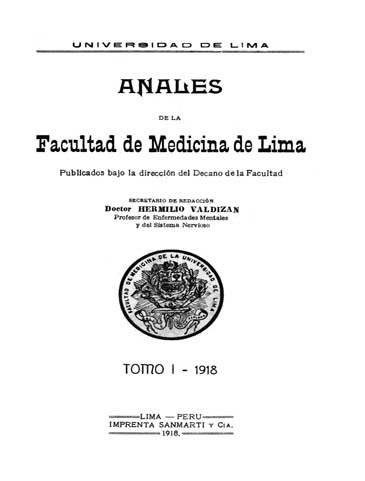The Phyllodactylus gerrhopygus in Peru. Your infection by a hemogregarina
DOI:
https://doi.org/10.15381/anales.v1i0.10700Abstract
In arid regions surrounding countryside of Arequipa, near the small hunting in the hills and in some pampas, where rocks abound, so common in Peru, lived from time immemorial a small Saurian platidáctilo, which they call "Salamanqueja "well known by farmers and feared by them because of the effects caused by its bite. The peasants cherish the belief that their bite is deadly, or at least that mutilation produce gangrene or members, to the extent that sighted the animal as soon kill you as soon as they can.Downloads
Published
1918-07-15
Issue
Section
Trabajos originales
License
Copyright (c) 1918 Edmundo Escomel

This work is licensed under a Creative Commons Attribution-NonCommercial-ShareAlike 4.0 International License.
Those authors who have publications with this magazine accept the following terms:
- Authors will retain their copyrights and guarantee the journal the right of first publication of their work, which will be simultaneously subject to Creative Commons Attribution License that allows third parties to share the work as long as its author and its first publication this magazine are indicated.
- Authors may adopt other non-exclusive licensing agreements for the distribution of the version of the published work (eg, deposit it in an institutional electronic file or publish it in a monographic volume) provided that the initial publication in this magazine is indicated.
- Authors are allowed and recommended to disseminate their work over the Internet (eg: in institutional telematic archives or on their website) before and during the submission process, which It can produce interesting exchanges and increase quotes from the published work. (See El efecto del acceso abierto ).
How to Cite
1.
Escomel E. The Phyllodactylus gerrhopygus in Peru. Your infection by a hemogregarina. An Fac med [Internet]. 1918 Jul. 15 [cited 2025 May 31];1:272-7. Available from: https://revistasinvestigacion.unmsm.edu.pe/index.php/anales/article/view/10700



